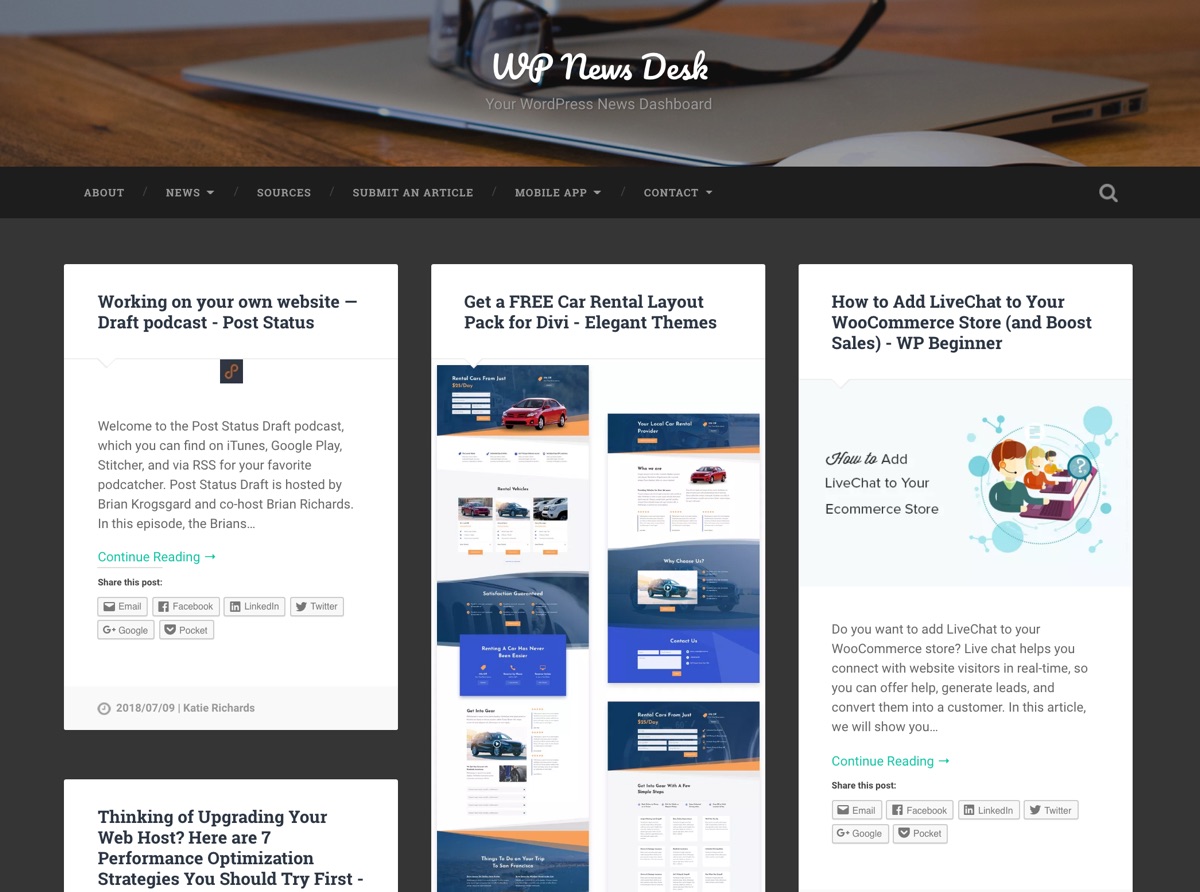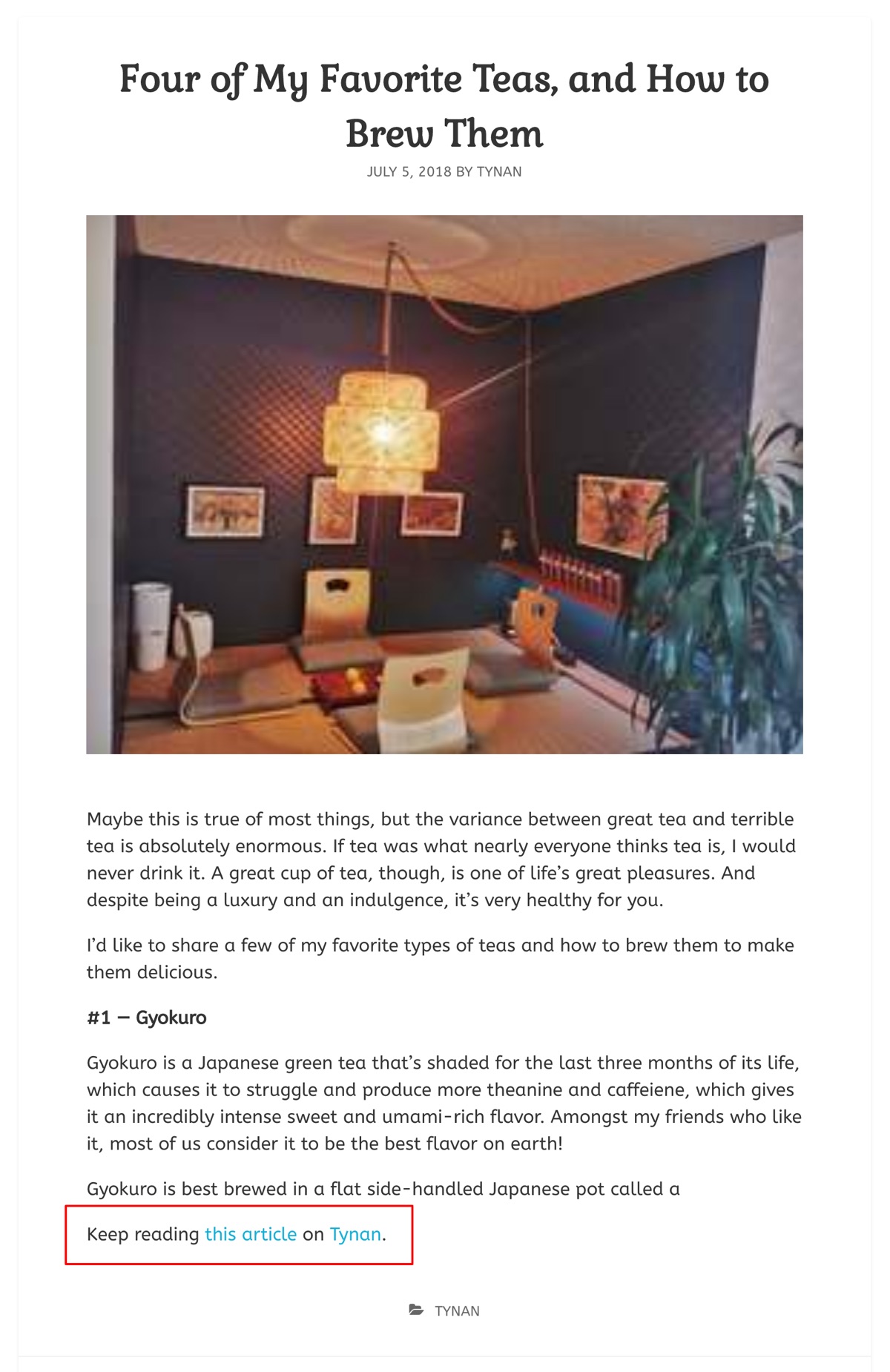Create An RSS News Aggregation Portal With WordPress

Back in 2013, Google dropped their support for RSS and killed off their popular service, Google Reader. It was a move that caused a great outpouring of shock from the blogosphere. Websites everywhere were scrambling to put together lists of alternative services for their RSS news aggregation and many people saw this as the end of RSS.
Though Google decided they no longer want to spend any time or resources utilizing the RSS format, there are still many uses for it and it certainly hasn’t gone anywhere in the past few years.
WordPress sites, by default, create RSS feeds during installation. These feeds can be used to turn one-time readers into regular subscribers, but they can also be used to aggregate content from other websites and post them to a site of your own. Using the RSS service responsibly in this manner lets you create a site that can be a central portal displaying content from many sites in your niche.
This can be done in several ways.
Your options involve:
- Create a simple list of posts that link back to the original article.
- Show each item as an excerpt of the content with a link back to the original source.
- Display the complete post on your site, crediting the original source.
I always recommend that you credit the original source whenever importing content, and when possible, only import snippets of the original article, not all of it (unless you have permission to do so from the original author).
The easiest way to create your own RSS news aggregation site is to use a WordPress plugin. There are a few options out there. We’ll be taking a look at the most powerful one currently available: WP RSS Aggregator.
The WP RSS Aggregator Plugin

WP RSS Aggregator is the most popular RSS import plugin that allows you to aggregate multiple website feeds and display them on your site in two distinct ways. These display options are:
- Use shortcodes to display items in a list in a post/page/widget.
- Create WordPress Posts from feed items (Feed to Post).
Each option is useful in its own specific way.
For example, when using the shortcode you can create a new (or add to an existing) page or post that will display a list of related articles from your niche. The shortcode option has numerous parameters that can be combined to create a list that has the details your readers will need. It can also be styled in various ways.
The Feed to Post option will create blog posts to mirror each of those pulled in via the RSS feed. This option allows you to dictate whether it is simply the title, an excerpt of varying length, or the full post that is imported. I can’t think of any legitimate reason for republishing the complete content of another site unless it’s your own. I advise avoiding that option entirely if you don’t have the owner’s clear permission.
Let’s take a closer look at each of the options.
Option 1: Using the Shortcode

The shortcode allows you to aggregate as many feed items as you wish onto a single post or page on your website. Some themes also provide widget areas where you can make use of the shortcode. This is especially useful if you are publishing your own blog posts as well as aggregating website feeds elsewhere.
The shortcode allows for the use of multiple parameters to control what and how certain elements are displayed. You can limit the number of feed items shown, add pagination to the list, and more.
Using the Excerpts & Thumbnails and the Categories add-ons, you can take the shortcode display a step further. The first option allows you to use the content provided within the RSS feeds you are using to enhance the display with short snippets and a thumbnail image, while the latter allows you to better organise your feed sources.

The shortcode parameters also extend to these two add-ons, allowing you to decide which shortcode display includes images, excerpts, or both.
This can be a useful method of displaying content from other sites, but it’s not the best option if the purpose of your site is either solely content aggregation or focused on giving your reader a better experience.
Option 2: Using Feed to Post

Using the Feed to Post add-on is the most useful and comprehensive method for aggregating a number of website feeds into one site, no matter what niche it is or what format the content is in; be it text, images or videos.
With this add-on, each feed item is created as its own post on your site. By default, it uses WordPress posts, but you can set it to import into any custom post type. These posts can be set to display as much of the original content as you think necessary. An excerpt of 100 words usually conveys enough of the original post to catch your readers’ interest.
To credit the original source you can use the general setting that adds the same generic message to each post, or you can use the Append/Prepend to Content feature to add a custom link for each source.

There are a huge number of options available to you with this aggregation method. You can set the posts to be automatically published or created as draft posts so that you can manually decide which ones to post to your site. You can turn on comments for your excerpts, alter the way images are shown if you decide to show them at all, assign existing users as authors or import the original author’s details, and much more.
Posts created using this method have additional management options available to them controlled in the plugin settings menu. These management options include the ability to quickly and easily delete all of the posts created by feed items, to configure when posts should be deleted from your site (if at all), and many others.
Final Words on Creating a RSS News Aggregation Portal
There are several uses for aggregating the content of a collection of websites into one location and this plugin makes that process simple.
You may be looking to build a hub for your own websites, a single portal for all of the posts created in your niche, or even a single location to scan content excerpts of multiple sites you want to follow.
For example, the WP RSS Aggregator team built WP News Desk – a news portal for everything WordPress, collecting posts from over 100 top sources. Each post links directly to the original source, giving them the credit they deserve. Such sites can also be monetized with ads, affiliate links, and more.
This plugin allows for multiple methods of achieving these aims and is the best and most popular RSS aggregator available in the WordPress.org plugin repository.
Have you created an RSS news aggregation portal with WordPress before, or ever thought about creating one? Are you using RSS in other ways to add content to your site? We’d love to hear your thoughts in the comments below.
And if you’re interested in learning more, you might also like our guide on how to create a social feed with WordPress.




Check out the WP RSS Aggregator plugin + add-ons as an alternative to this one. Expect better code quality and a cleaner interface.
haha, of course it’s much better – you made it 😉
This really is a stupid comment Jean! 🙂
This article was very helpful to me.Thanks Tom.
Glad it helped!
I’m using this plugin together with Excerpts&Thumbnails, Keyword Filtering and Categories extensions and it works great and is easy to use. I especially like the keyword filtering so that you can really display only the feed content (for each feed source) that is of interest to you. Together with exceptionally awesome support (thanks Jean!), this is a five star plugin!
Thanks for this post Tom. What theme would you recommend for news aggregation portal ?
Good question! Very difficult to answer though — depends entirely on what kind of style you’re looking to achieve!
How does this plugin handle SEO on posts when you use the “Feed to Post” option?
We’ll if you are thinking of pulling content onto your site you are essentially publishing duplicate content on your site. So…the smaller the excerpt you decide to show, the less likely you will be penalized by Google.
When using Feed To Post, make sure though you have the rights to publish the content from the feed on your site. If you are thinking of pulling content from another website that isn’t yours, be sure to ask permission first or you might end up with a pretty DMCA notice.
Perhaps I was not clear… How would you add basic SEO to posts that were made with the “Feed to Post” option? Would you end up doing it after the post is made? If I leave it on automatic for a few days, I may come back to a dozen posts that need SEO – even basic SEO such as Tags. I would like to alleviate that issue, as it’s one less step I’d need to deal with.
When you say SEO you mean adding meta tags, meta description, meta title…etc. You’ll want to use an SEO plugin for this, I prefer WordPress SEO by Yoast which is free on WordPress.org. Then go through the settings. There are options to auto generate the meta titles and descriptions. I’m not sure about meta tags, but no one uses those anymore – they are useless.
Hello, i want to ask how can i make my aggregated feeds start with my domain URL and then followed by the aggregated source url?
the link to the plug in says
“This plugin has been closed and is no longer available for download.”
Yes – the WP Rss MultiImporter is no longer supported…. BUT we actually have an update to this article showing how to use an even better plugin coming out this week! So keep an eye out on social media when we share it 🙂
Thank you for giving us the opportunity to update this post, Kyla!
This article was very helpful for setting my RSS.Thanks